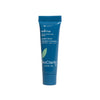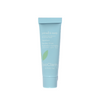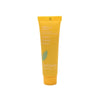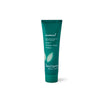Does Chocolate Cause Acne?
By Abby Vinas
Causes of Acne
•
0 Comments
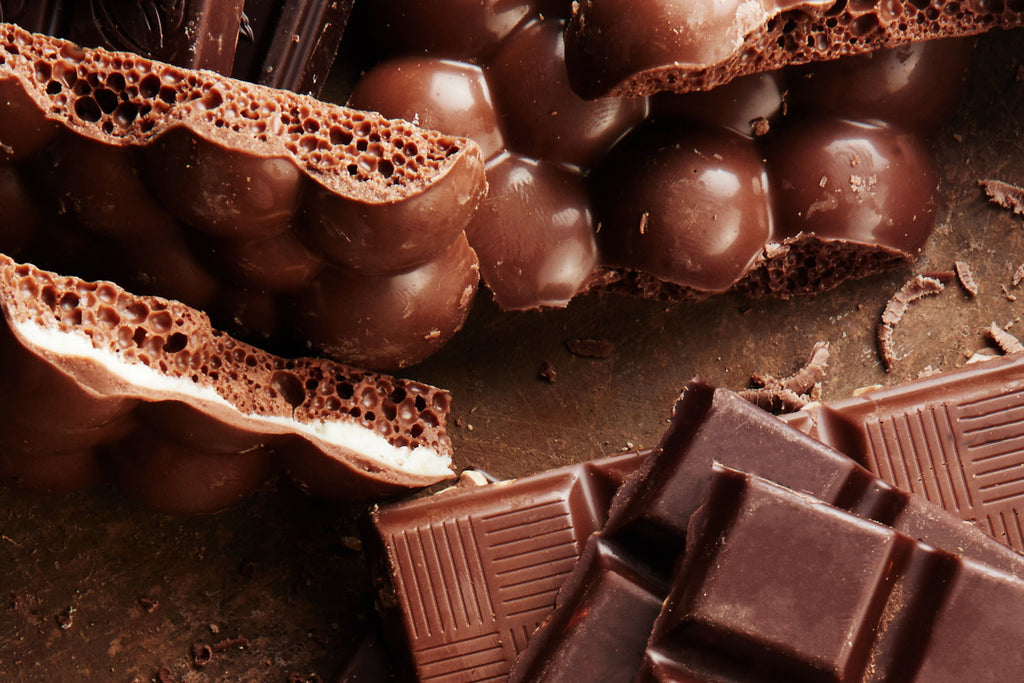
Treating and preventing acne means narrowing in on the reason for your breakouts. Ever wondered if there was a connection between acne and your diet? People often ask "Does chocolate give you pimples?". If you’re a chocoholic, you likely shed a tear or two when you found out that your favorite chocolate bar might actually be the perpetrator behind those pimples.
Chocolate and Acne
Chocolate has long been labeled a direct cause of acne, but the science doesn’t fully support this claim. However, there is a connection between acne and food; both dairy and sugar have been observed to cause fluctuations in blood sugar and hormonal levels.
With acne explained, it's easy to see why this fluctuation can cause an increase in cell turnover and sebum production, which can lead to acne and severe breakouts.
Does Eating Chocolate Give You Acne?
Chocolate won’t necessarily make you break out, according to dermatologist Diane Walder: "There have been thoroughly and correctly conducted studies on chocolate and there's never been anything that pointed to it causing acne.”
However, diets that are high in sugar and fat can result in increased sebum production. Because sebum production is a main factor behind what causes acne, it's important to watch the levels of oil your body produces. High-sugar diets can also promote inflammatory response, which can result in more severe acne breakouts. Bottom line? Go ahead and eat your candy bars, but do so in moderation.
Bottom Line: Chocolate doesn't directly cause acne, but the ingredients in that chocolate bar could be doing your skin harm.
We have to dig into the past and look at the available research to discover how this sweet treat got on the bad side of numerous dermatologists across the country.
Clearer skin in as little as two weeks.
This 3-step routine combines the most effective (clinically-proven) acne fighting ingredients with powerful plant intelligence to leave your skin nourished, refreshed, and clear.
Try SomeChocolate vs Acne Study: 1969
One of the first studies in the acne and chocolate debate was performed in 1969. James Fulton, Gerd Plewig, and Albert Kligman performed a research study on a group of 65 people that struggled with moderate forms of acne.
The Study
Some of the 65 individuals were given a chocolate bar that contained over 10 times the amount of chocolate normally found in a candy bar. The rest of the test group subjects were given an identical candy bar that contained no chocolate whatsoever.
The researchers counted the number of acne blemishes before and after the candy bars were eaten, and what they observed seemed to indicate there was no difference between the two groups.
Because of this observation, the team decided that chocolate consumption had no significant effect on the production of sebum, therefore assuming that chocolate didn’t, in fact, make acne worse.
Study Flaws
- The bar that contained no chocolate still had identical amounts of sugar, fat, and calories, so there was no way to compare the difference in the consumption of fatty, processed foods.
- The study was too short; they only studied their subjects for around a month. Today, modern acne treatments can take at least three months before seeing significant improvements in the skin.
Chocolate and Acne Study: 1971
Just two years later, another set of researchers set out to examine the effects of chocolate on the skin.
The Study
According to the US National Center for Biotechnology Information (NCBI), researchers gave 27 students four specific foods and drinks, all of which had been reported as common acne triggers. These included chocolate, milk, roasted peanuts, and soda. The researchers handed out these supplies for a week, and then took a look at the results.
They found no evidence of a significant change in acne. However the study did have flaws, preventing them from getting an accurate understanding of acne as explained below.
Study Flaws
- It was too small and too short; a week wasn’t nearly enough time to notice a remarkable difference.
- The researchers didn’t track what the students ate other than these four items during the week.
After these two studies were performed and seemed to indicate that chocolate didn’t result in breakouts, chocolate was given a clean slate.
Imagine the glee: Finding out your favorite treat didn’t actually cause your skin to break out. Dermatologists and their patients rejoiced, and it would be another 40 years before some contradictory research came out.
Chocolate and Acne Study: 2003
Finally, at the turn of the 21st century, a new study was performed that would show some different results.
The Study
In a study published in the Journal of Nutrition, researchers found that insulin levels increased after test subjects ate meals which included chocolate, especially chocolate milk. This led the researchers to hypothesize that the increased insulin was caused by compounds found in chocolate.
Insulin is one of the major components of hormonal acne. If your insulin levels are high, all of your other hormones may fluctuate. However, there were some disputes with this study.
Study Flaws
- Chocolate can actually reduce insulin reduce insulin resistance, resulting in a long-term positive effect.
Chocolate and Acne Study: 2014
The Study
The Journal of Clinical and Aesthetic Dermatology published a study in 2014 that indicates chocolate may be a direct cause of acne breakouts. This study looked at 14 men between the ages of 18 and 35. Each man was given six capsules for daily consumption; the capsules either contained pure cocoa or gelatin.
On days that followed chocolate consumption, the test subjects exhibited more acne, with a higher number of both non-inflammatory acne (whiteheads and blackheads) and inflammatory acne (pimples and cysts).
This seemed to indicate that cocoa powder could have an immediate effect on the skin.
Study Flaws
- It was small, with only 14 test subjects. The smaller the study, the more likely it is to contain errors.
- It could have been a coincidence. Because the study wasn’t conducted over a long period of time, some naysayers believe the change in acne prevalence could be simply a natural variation.
While there seemed to be a clear link, without further research showing similar results, this study simply isn’t enough to prove that chocolate causes acne breakouts.
Beyond the Cocoa Powder
What about the other main ingredients in chocolate?
Dairy
Milk is a hot button issue in acne prevention. Many dermatologists recommend their patients cut down on dairy intake as it has been connected to breakouts, but there’s no definitive proof milk causes pimples to form.
However, milk contains androgen precursors that can be quickly converted into androgens when exposed to specific enzymes found in the skin’s sebaceous glands and pores. Pasteurized milk also contains hormones like IGF-1, which has been observed to increase sebum production.
Sugar
Most chocolate bars, especially milk and white chocolate, contain loads of sugar. Sugar has been proven to be terrible for the skin. It can cause a rise in blood sugar, resulting in higher levels of insulin. As mentioned earlier, this increase in insulin can result in more sebum. Both dairy and sugar are causes for oily skin.
Are Any Types of Chocolate Worse for the Skin?
When examining whether chocolate causes acne, it’s important to understand the differences in types of chocolates.
Dark Chocolate
Dark chocolate promises a variety of health benefits. It packs in loads of antioxidants, which could in theory fight free radicals. Because free radicals can promote the production and accumulation of bacteria on the skin, getting rid of them is a great aid to the process of curing acne.
Dark chocolate doesn’t contain as much sugar as other variants of chocolate, but it’s important to choose brands that contain few additives.
If you’re looking to satisfy a chocolate craving, dark chocolate is far and away the best choice.
Milk Chocolate
Milk chocolate contains a high amount of sugar and incorporates many additives. It has less cocoa powder content than dark chocolate, so it offers fewer health benefits. It also contains milk, which can be inflammatory for people struggling with acne.
White Chocolate:
White chocolate actually doesn’t qualify as genuine chocolate, as it doesn’t contain cocoa powder. White chocolate is generally composed of milk solids, sugar, milk fat, lecithin, and cocoa butter, and is generally very high in sugar. Because there is no cocoa powder, companies often add numerous additives to make it taste sweet.
It's also important to understand the various types of acne you might have. Those with anti-inflammatory acne might see diet make a difference in their breakouts.
Those with cystic acne might not. What is cystic acne? This inflammatory acne is often genetic and sees painful, large lesions growing beneath the skin. Chocolate isn't likely to affect the skin of someone already genetically predisposed to breakouts.
The Chocolate and Acne Conclusion
For nearly a century, health professionals have told their patients (and parents have told their children) that chocolate causes acne, but the evidence doesn’t corroborate these claims—at least not completely.
Your best bet is to study your own skin patterns. Eat a candy bar (or two) and examine how your skin looks and feels in the hours and days following. It’s likely you won’t notice a marked difference unless you have abnormally high cocoa powder intake—very hard to do for even the most dedicated chocolate connoisseurs.
Like those who wonder: "Is acne caused by stress?" those wondering about chocolate's role in breakouts don't have a definitive answer. The debate still rages on about whether chocolate causes acne, and it will take more definitive research in coming years to prove either way. In the meantime, feel free to splurge and feed that sweet tooth every once in a while.
Here are some additional resources you may find interesting related to the causes of acne:

Abby Vinas
Abby Vinas has long been an active member of the holistic health community, advocating in favor of its benefits to both our physical and emotional well-being. Her commitment to leading a healthy lifestyle has made her an authority on self-care practices. Abby is passionate about fitness, nutrition, and proper skincare, and is also an avid lover of avocado toast and dog-petting.
